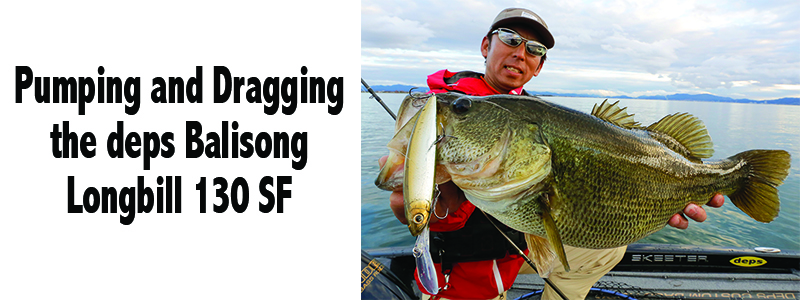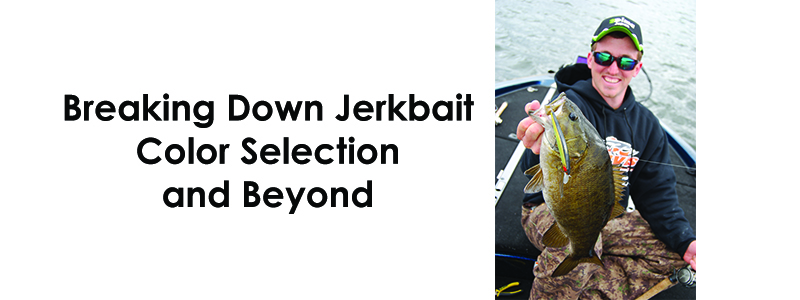Fred Roumbanis is known for his prowess with a swimbait. It began during his days in California and continued throughout his professional career. He has always loved throwing swimbaits. He designed the Boom Boom family of swimbaits for Optimum Baits and has been having great success on the Bassmaster Elite Series with the baits that bear his nickname. He shares how he fishes them and offers some tips on retrieves and how to fish them correctly.
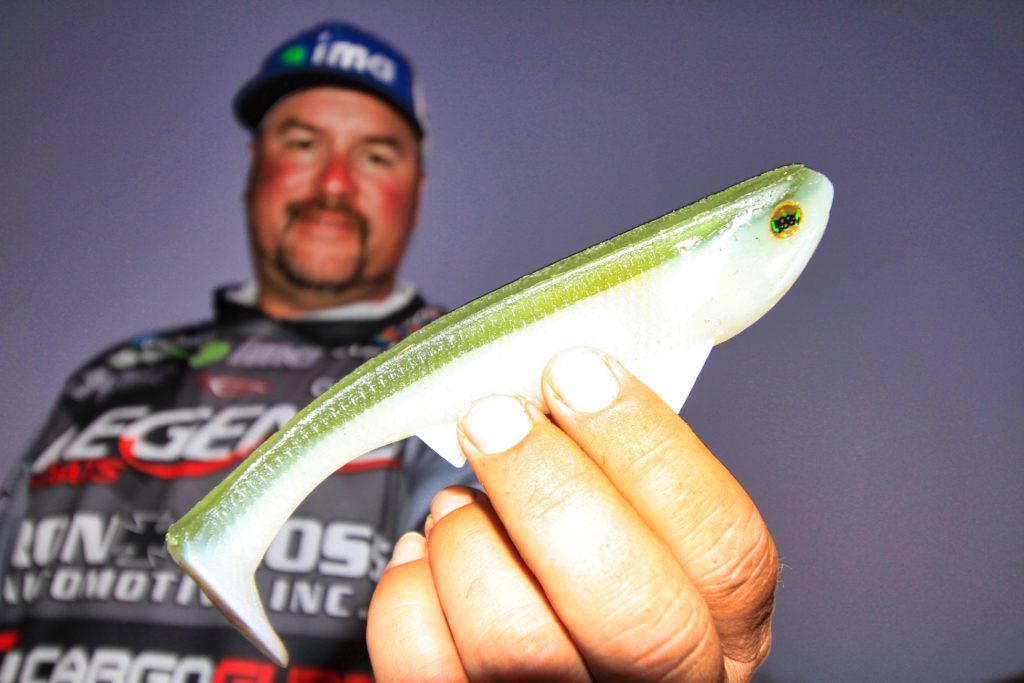
“For a lot of people, throwing a swimbait is intimidating,” begins Roumbanis who also feels that many anglers group all swimbaits in with the jumbo trout imitators. “The 6” Boom Boom swimbait is really about the same size as a big walking topwater bait. It’s also not much longer than a ChatterBait or spinnerbait when you add a trailer to them.” Getting over the initial apprehension to swimbaits quickly stops when you catch your first bass on the Boom Boom.
Roumbanis advises anglers to fish them until you catch a few and gain confidence in swimbaits as they are a great way to catch above-average sized bass. “You have to commit to it and throw it and be patient with how you retrieve and fish the bait. You won’t miss many of the fish that bite it, they will eat it, but it just takes a willingness to fish it until you start getting bit.”
The Retrieves
One of the most important pieces of the puzzle when fishing the Boom Boom swimbait is to have the right retrieve. Roumbanis uses two main retrieves, one with calm conditions and one for windy conditions.
When he is fishing the 6” rigged version and the water is calm, he most often retrieves the rigged version with a bow in his line. He has slack in his line with his rod in the 10 o\’clock position and will give the bait a quick pop at the beginning of the cast to get the tail kicking properly. Roumbanis is careful to keep the line bowed and not completely tight and he does this for two reasons.
“First, it is a great strike indicator and you can see when one grabs it, but it also ensures you are not fishing it too fast. If the bait is rolling at all, you are fishing it too fast and having that slack in your line makes sure it stays at the perfect speed,” he shares. “I cast it out and let it fall for a second or two and then start the retrieve. I also give the bait a little twitch every once in a while to give it a spurt and make it look like an injured baitfish”
When fishing in windy conditions with the rigged Boom Boom or anytime he is fishing weedless version, he will keep his rod tip low and reel slowly on a tight line. “I really like to let the wind take me and not use the trolling motor if I can help it. I just keep steady tension and reel slowly,” he adds. “The biggest thing is to stay steady and be patient and not reel it too fast.”
If you want to fish it a little faster, you can add tungsten nail weights. “If you hold one of the translucent rigged Boom Boom to the light you can see the harness and the bends in the wires. You can add 1/16 oz. tungsten nail weights in between the bends,” he says. This allows the bait to stay deeper and you can increase your retrieve speed if desired.
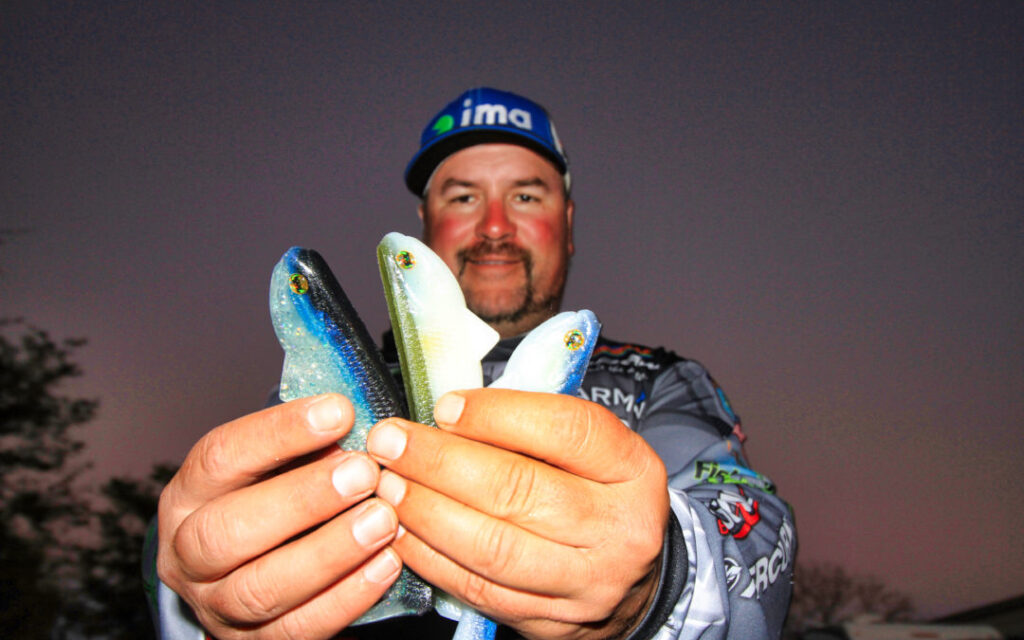
Where, When and Detecting Bites
There are many scenarios where a swimbait will work, and Roumbanis will use the Boom Boom anytime there is some visibility in the water. “If there is one foot or more of visibility, it is swimbait time,” he says.
There are also many places where they work. “A long cast is one of the most important things when fishing swimbaits and I like to make casts with the Boom Boom over flats, breaks, over submerged vegetation and around rocks and standing timber,” he says and added that just about any cover and structure that holds bass is a good place to throw a swimbait.
Roumbanis has learned that when a bass grabs it you will feel two bumps. “The first one is usually them hitting it and the second one is them getting it inside their mouth. This is when you want to swing, on the second bump,” he adds.
Boom Boom Gear
Roumbanis likes to fish the 6” rigged version on a large crankbait rod. His rod of choice is an iRid Genesis II Cast Rod 7\’11\” Fred\’s Crank Launcher. “It has a long handle and I like to cast with two hands to really get long distances in my cast. It has a nice parabolic bend so you don’t pull the bait from the fish,” he says.
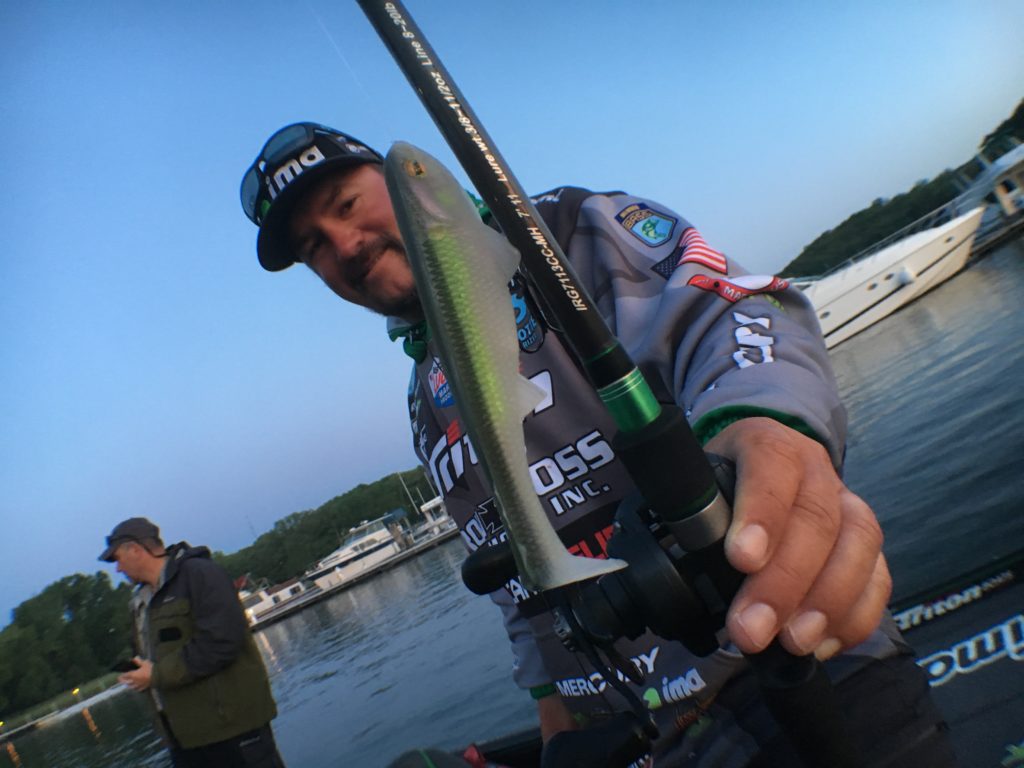
Another important part of the equation is the speed of the reel you are using as a fast retrieve makes it more difficult to slow the bait down to the right speed. “I sometimes use a faster reel, but I always advise people to start off with a 6.2:1 or any gear ratio in the 6’s. Once you learn the right speed you can experiment with different reels,” says Roumbanis. He prefers the Cabela’s Arachnid which has a wide spool capable of holding plenty of the 15 to 20-pound fluorocarbon he prefers for these lures.
Swimbaits like the Optimum Boom Boom are big enough to tempt giant bass but their size allows them to be fished in all regions of the country with success. Roumbanis says the biggest key to success with his swimbaits is a slow retrieve and sticking with it. Once you catch your first Boom Boom fish, it will be hard for you to put it down.




